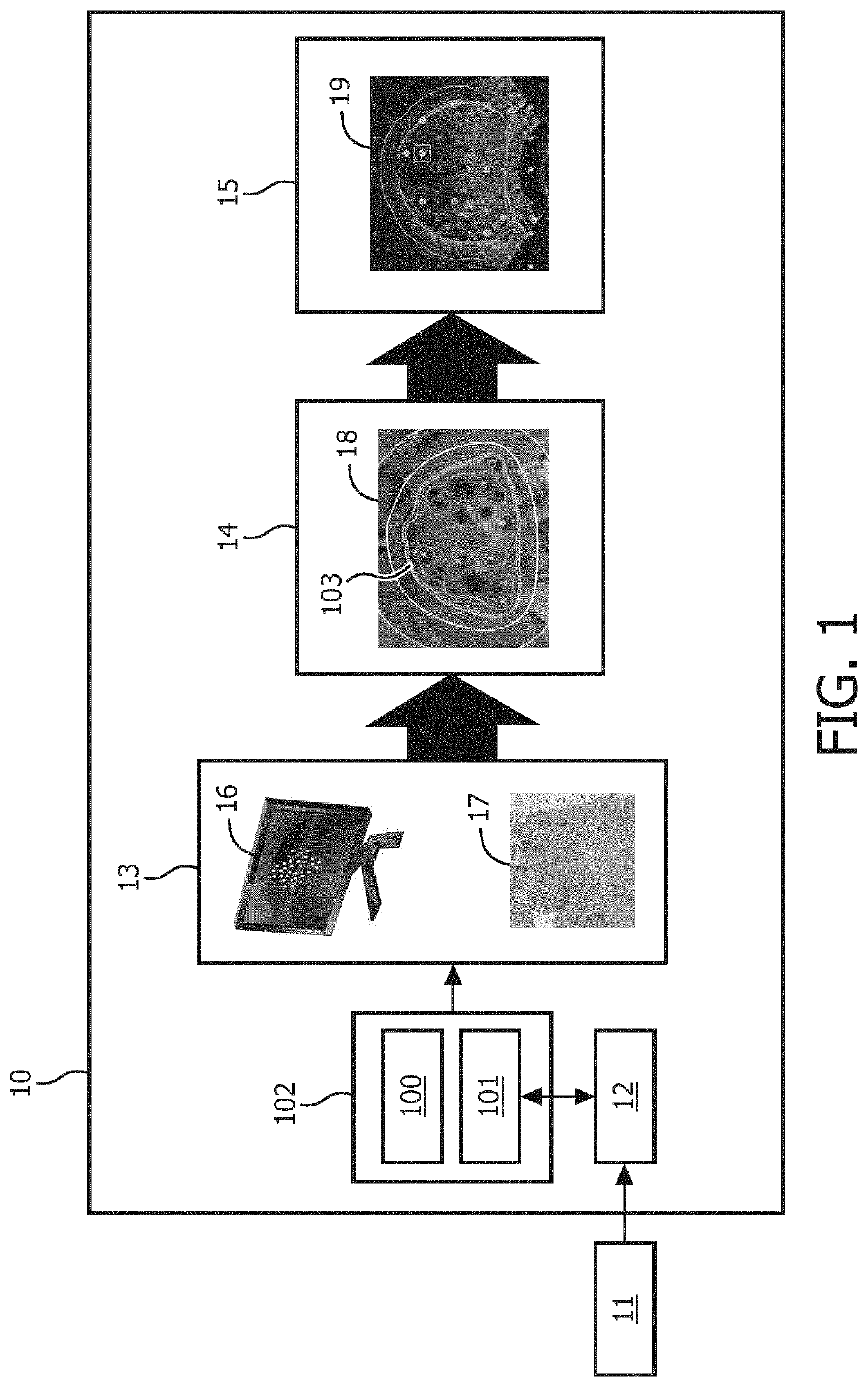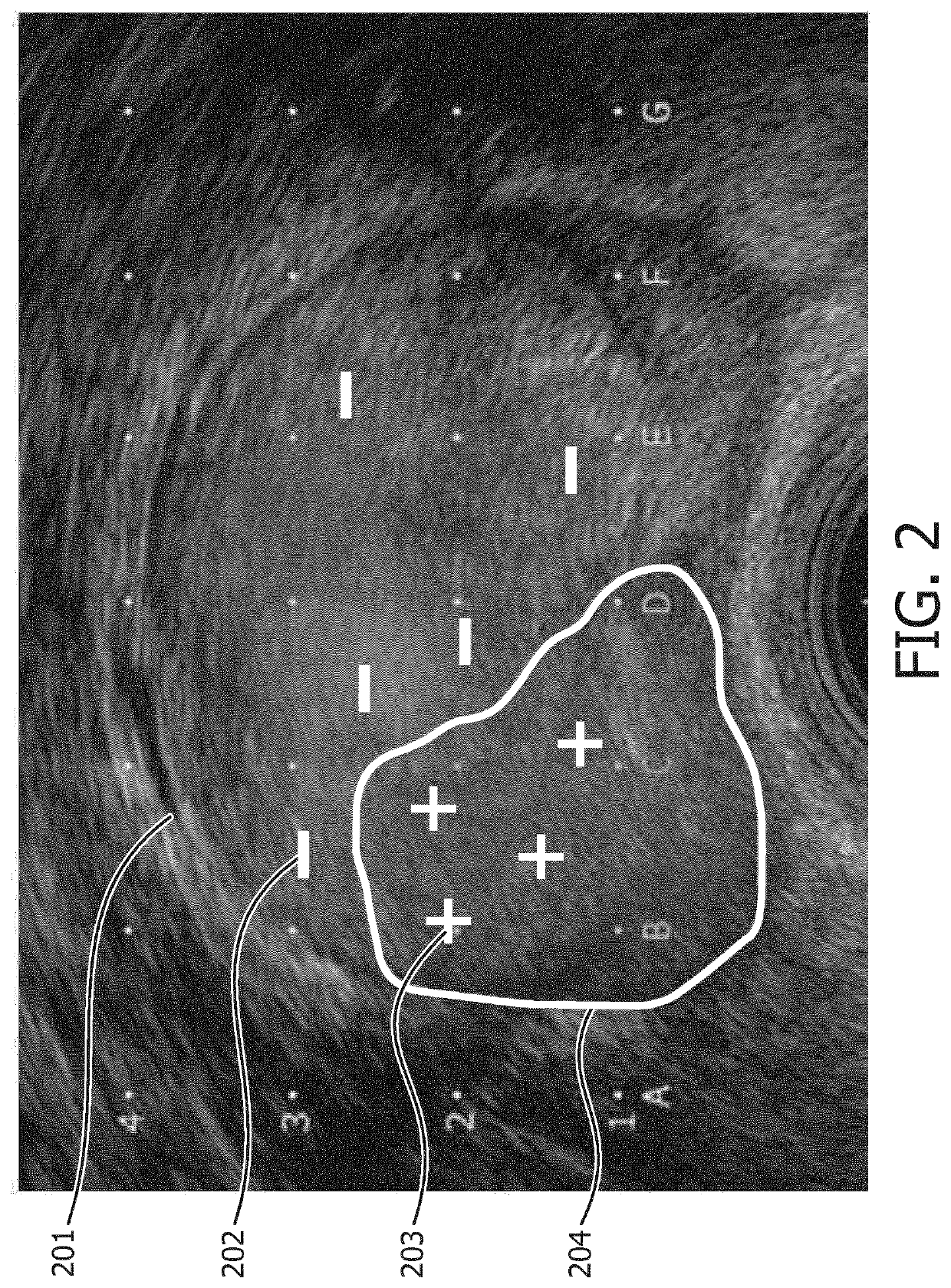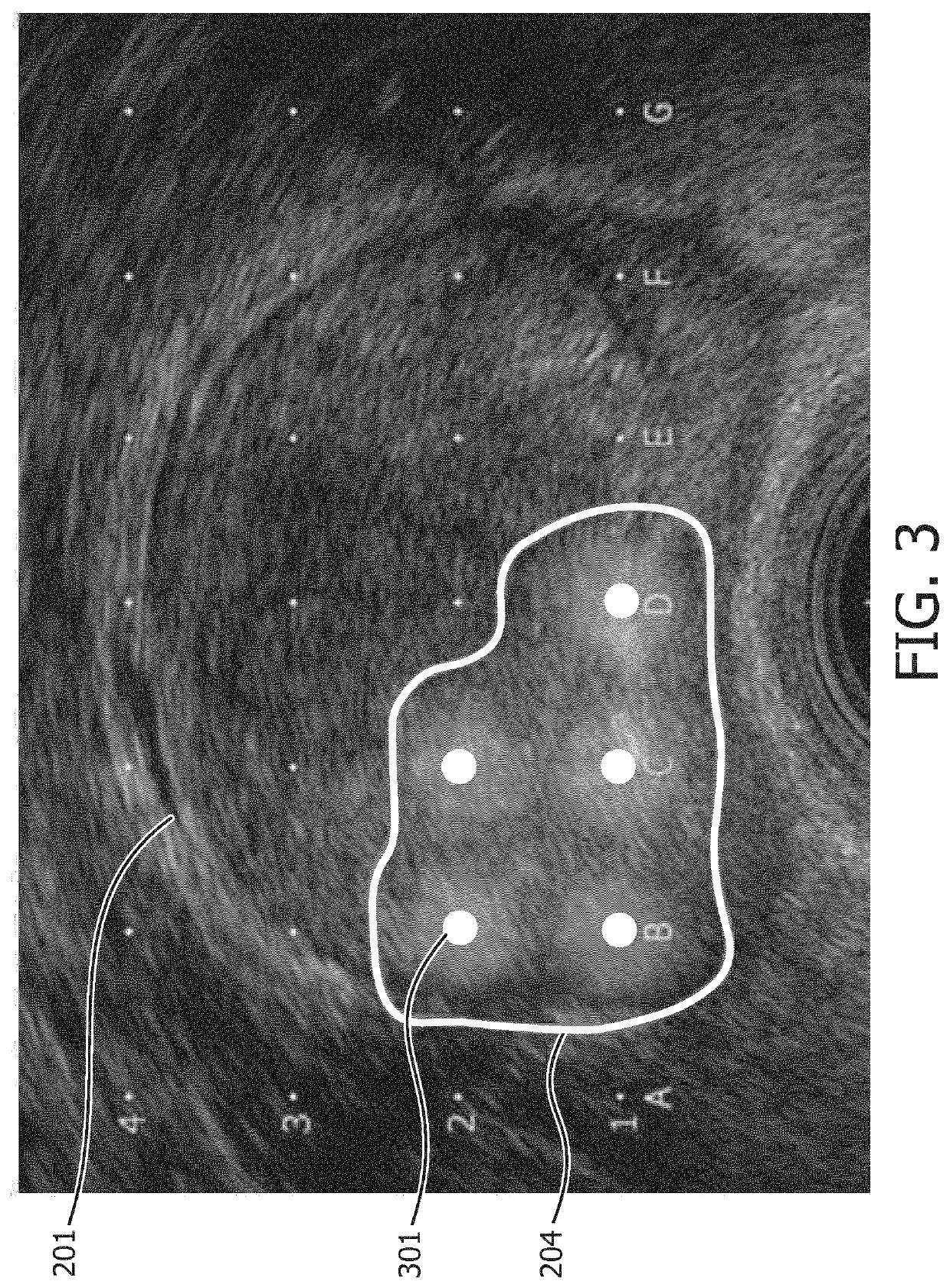Dose planning system
a technology of dose planning and dose, applied in the field of dose planning system, can solve the problems of difficult determination of correct dose and complicated delineation of tumour tissue, and achieve the effect of speeding up the diagnosis to the treatment process
- Summary
- Abstract
- Description
- Claims
- Application Information
AI Technical Summary
Benefits of technology
Problems solved by technology
Method used
Image
Examples
Embodiment Construction
[0025]FIG. 1 shows a dose planning system 10 according to the invention. The dose planning system comprises a biopsy map creation module 13, a probability map calculation module 14 and a dose planning module 15. A dose planning workflow using the invention could start with the acquisition 11 of images of an organ of interest based on which the suspicious locations within the organ could be identified. Also non-suspicious locations could be identified. These images could for example be magnetic resonance (MR) images. The MR images could be provided to registration module 12. During a biopsy procedure, image guided biopsy system 102 could acquire ultrasound images for biopsy guidance by means of ultrasound system 101. At least one of the ultrasound images is provided to the registration module 12. The registration module then registers the ultrasound image with the MR image, such that the identified suspicious and non-suspicious locations of the organ can be translated to the imaging ...
PUM
 Login to View More
Login to View More Abstract
Description
Claims
Application Information
 Login to View More
Login to View More - R&D
- Intellectual Property
- Life Sciences
- Materials
- Tech Scout
- Unparalleled Data Quality
- Higher Quality Content
- 60% Fewer Hallucinations
Browse by: Latest US Patents, China's latest patents, Technical Efficacy Thesaurus, Application Domain, Technology Topic, Popular Technical Reports.
© 2025 PatSnap. All rights reserved.Legal|Privacy policy|Modern Slavery Act Transparency Statement|Sitemap|About US| Contact US: help@patsnap.com



